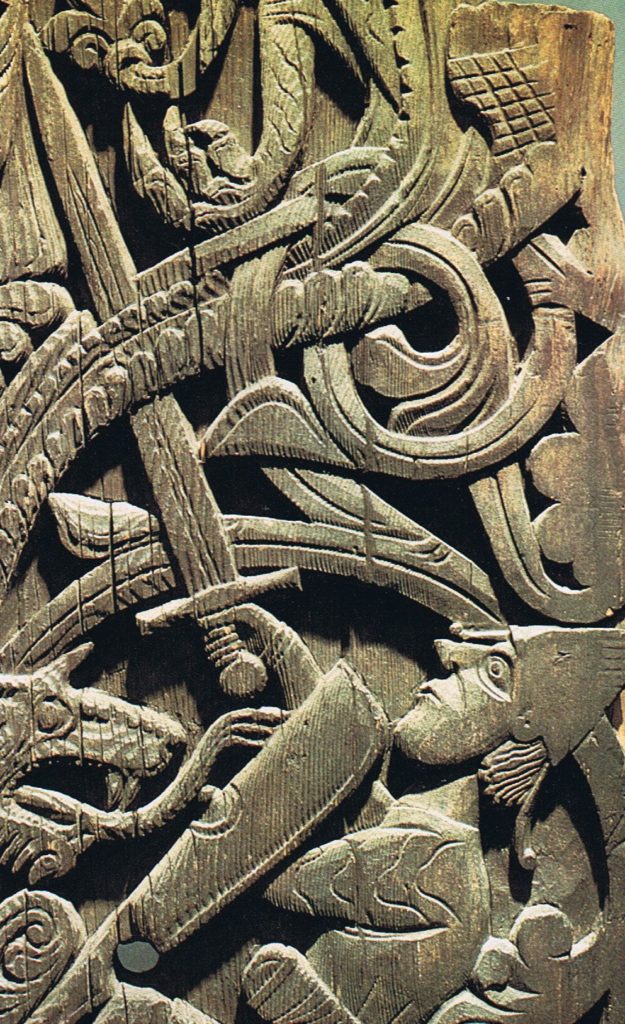Is it possible to talk about monastic women writers without discussing community? Even the collaborative efforts by which so many monastic women’s texts were created and handed down bring the community context and influence to the foreground.
And they give us our general idea of “monastic community”: nuns in their black or gray habits, singing the Divine Office together every day, recording the revelations reported by a particularly special community member.
But this is a purposefully distorted picture. The community of people within a monastery included a variety of servants and lay sisters (or brothers). Lay sisters, sometimes known as conversae, professed similar vows to choir nuns, but their mode of religious life was strictly providing manual labor for the convent. Joining the convent from the rural peasantry or urban lower classes, they did not sing the liturgy, meditate over books and images, or even learn to read at all.
Monastic women authors, so often keen on preserving the words of their (choir) sisters, show little interest in the inner lives of their servants and lay sisters. Authors of the Schwesternbücher from fourteenth-century Germany, especially Elsbeth Stagel of Töss and Katharina von Gebersweiler, offer miniature hagiographies of exceptional lay sisters like Gertrude of Saxony (with all the attendant questions about whether these connect to reality, or to the choir sister’s ideal). The brilliant and courageous Caritas Pirckheimer, prioress of the Dominican Katharinenkloster during the Reformation, is a rare case of referring to some servants by name. But even she writes of the city in the clutch of Reformers:
“Sometimes rather angry, audacious fellows surrounded the cloister and threatened our servants that they were about to attack the cloister on that very night, so we were very afraid and worried and could hardly sleep from fear.” [1]
Pirckheimer tells us the what that happened to the servants, but both the “we” and the emotional reaction (it is clear in context) only apply to the choir sisters.
However, these women joined convents rather than seeking secular employment for a reason. They had spiritual goals and spiritual lives of their own, but they seem almost completely silenced.
To make matters worse: an even rarer case where a lay sister is allowed an actual voice, in the spiritual autobiography of 14th-century Dominican nun Margaretha (Margaret) Ebner, the picture is hardly flattering.
In 1324, Ebner and the other nuns of Maria Medingen had to flee their convent for safety during a flare-up of fighting between yet another Holy Roman Emperor and yet another pope. Ebner reports that the convent prayed feverishly for protection. She even had a vision of the convent filled with “poor people” [souls in purgatory] who instructed her to pray vigils to God on their behalf for the health of the community.
But the war came too close. Rather than move to a different Dominican house, the usual practice, Ebner records in her Offenbarungen that she returned to her mother’s family home at Donauwörth. But she did not go alone:
I continued reading vigils [for the souls in purgatory]. I had a lay sister (weltlich swester) with me who was sad because I read vigils so much, and she was very angry about it and said it would do me woe. Then she saw one time that the house was full of poor souls and they said to her, “As you will not pray for us, do not begrudge that others pray for us.” [2]
Ebner presents a picture of a lay sister who cannot comprehend the importance or the point of an actual monastic life—who does not, it seems, even understand prayer. And it hinders her to the extent of trying to deny Ebner the chance to pray with the goal of the safety of her community—the community they both supposedly belong to.
Was this lay sister just another person who thought Ebner should be relieved to have a “vacation” from monastic drudgery? That does not seem to describe someone who would vow their entire life to serving nuns who sang the liturgy daily.
It’s important to note that Ebner started her spiritual biography in 1344, twenty years after this supposed incident, and that she was working within very specific genre conventions. Namely, both the text and the life it claimed to described needed to fit specific patterns of holiness. Even if the Offenbarungen relate some version of an actual incident, it serves a very particular purpose in the text. Ebner’s commitment to the liturgy, to claustration even in the secular world, to the safety of her convent community is on full display. It even receives divine confirmation!
Instead of a voice of protest, thus, the lay sister is rendered a prop for Ebner’s sanctity. Whether or not she ever thought or told Ebner that maybe she should back off the prayers, the conventions of spiritual autobiography turn her into a literary device.
But conventions only work if they make sense to readers. In this case, that means understanding and accepting that Ebner would flee her convent for her mother’s home, and that a lay sister would accompany her. That was not the typical pattern, in which the community would evacuate together (including servants, books, and chickens, it is often noted). The lay sister is specifically identified as such, not as a servant, and at any rate, there would have been servants aplenty at Donauwörth.
Instead, we have a case of a lay sister who went along with a nun despite an apparent lack of a warm relationship between the two (or, one hopes, Ebner would not have presented her so negatively). In other words: this is probably a woman who had nowhere else to go. Maybe her own home was too far away; maybe it was close enough to be under just as much threat as Maria Medingen.
The lack of security surely shaped the lay sister’s religious life some way, including during times of relative safety. It definitely would have affected how she related to the convent as a whole, and to her experiences there. Further reading through the silences—and the silencing—of monastic texts by women and their male supporters will hopefully allow us to tease out something of the average, not just the exceptional, lay sister’s spiritual life as true members of a monastic community.
Cait Stevenson, PhD Candidate
University of Notre Dame
~~
[1] Translated in Caritas Pirckheimer, Caritas Pirckheimer: A Journal of the Reformation Years, 1524-1528, ed. Paul A. MacKenzie (Boydell and Brewer, 2006), 74.
[2] Philipp Strauch, ed., Margaretha Ebner und Heinrich von Nördlingen: Ein Beitrag zur Geschichte der deutschen Mystik (Tübingen: Mohr Siebeck, 1882), 7. A partial English translation is available in Margaret Ebner, Margaret Ebner: Major Works, ed. and trans. Leonard P. Hindsley (New York: Paulist Press, 1993), 88.



